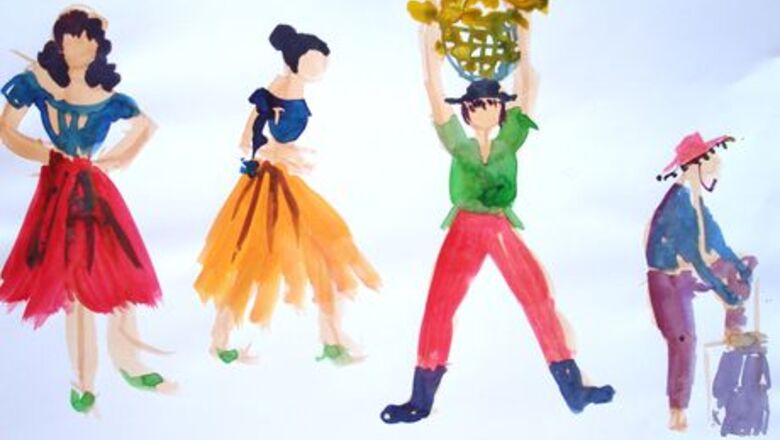
views
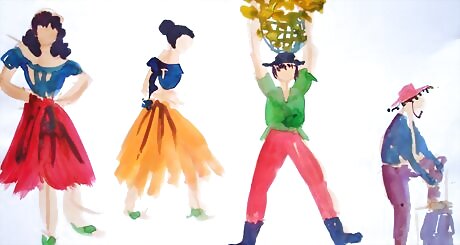
Use heavy weight paper, tag board, or watercolor paper, a pencil, and a set of watercolors. For figure references use snapshots you've taken, magazines or even the daily newspaper.
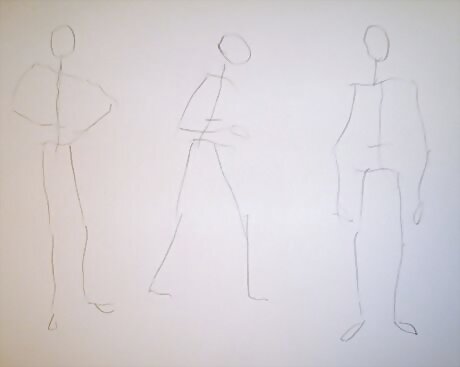
Do a practice sheet of stick figures in various poses. Use your pencil, but hold it loosely near the top, rather than close to the lead, as you would to write. Start with a lightly curved line for the spine. Cross it almost at the top for shoulders, a few inches lower for the waistline and lower again for the hip line or pelvis. This establishes the body's central mass.
From the edges of the shoulder do arms in three parts: biceps, lower arm and hand. Remember to bend the arms at the elbow and wrist.
Work upward and at the topmost of the spine, do an oval for the head. Allow for the neck. Drop lines off the two sides of the hip line for legs. Do them in three parts, just as you did the arms. Bending legs at the hips, knees and ankles gives movement to the figure.
Add elongated triangles for feet.
To flesh out one of your stick figures, mix puddle of flesh colored paint. Paint directly over the pencil lines.
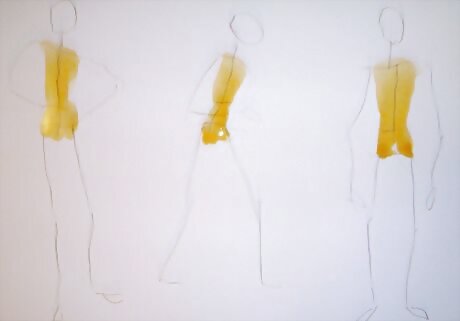
Begin with the center mass or torso. Keep it wider at the shoulders and tapered slightly at the hips.
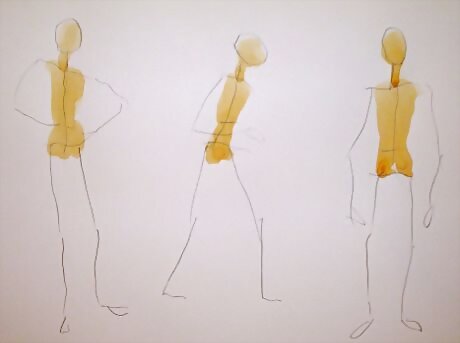
Paint the neck and head shapes.
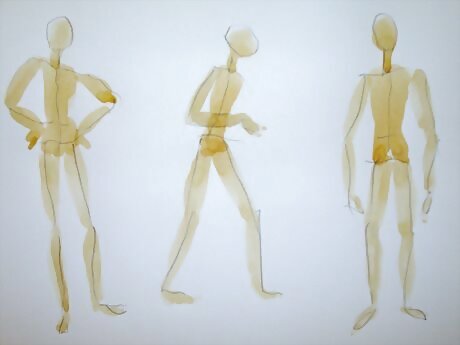
Think of sausages for the two parts of the arms and legs, fatter ones for the tops of the arms and legs. Add small triangles for feet and hands. You will now have the shape of a person. Let this dry thoroughly.
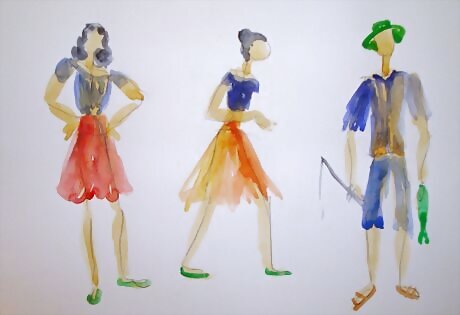
Dress this stock figure in any clothing imaginable. Paint right over the flesh-colored body, keeping your watercolor dense enough to let the colors shine, but still transparent.
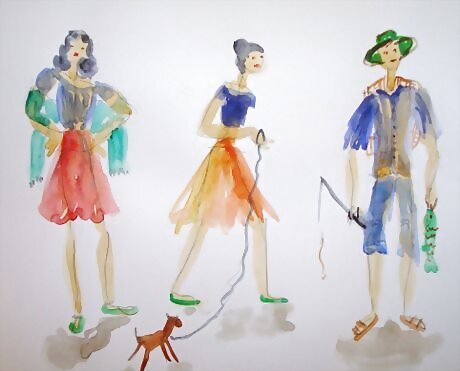
Watercolor is a layering medium. When the under layer is dry add more details up to three new layers. Don't forget hair and facial features.
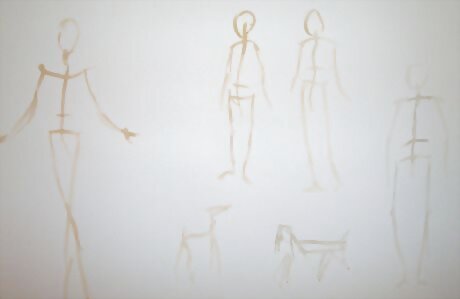
If your first attempt is not quite up to what you envisioned, repeat the process on another stick figure. Bear in mind that people come in all shapes and sizes. Use your photo references as a guide only, don't try for a realistic image. Also, try doing the stick figure in diluted paint with a small brush.
Make the background as realistic as you wish---or keep it simple by painting random colors, lines and shapes to link the figures.










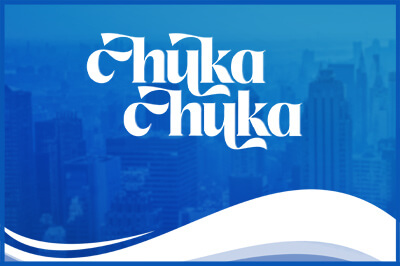
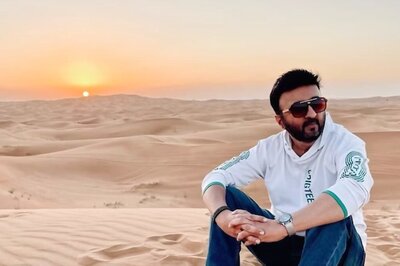
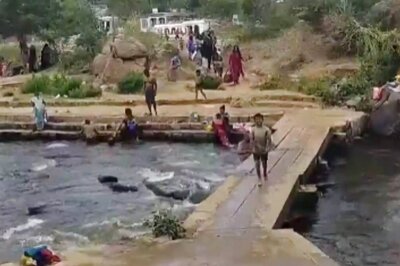
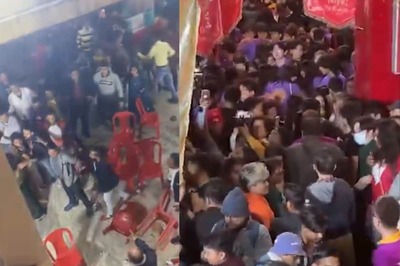
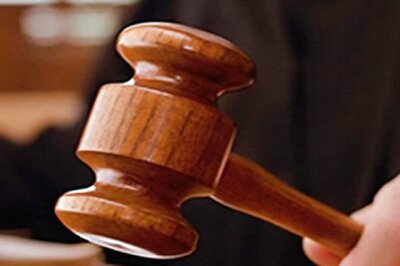
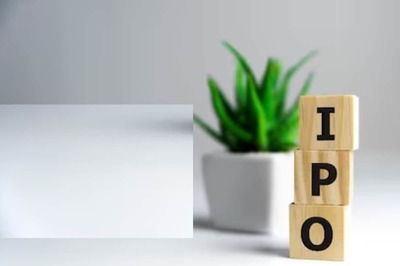

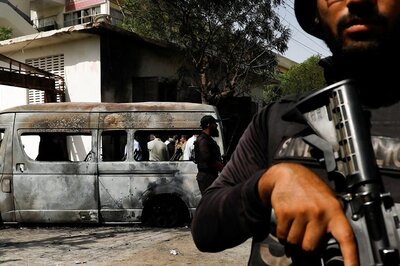
Comments
0 comment